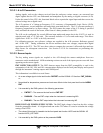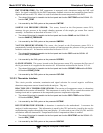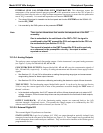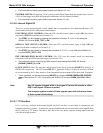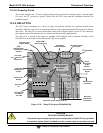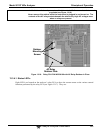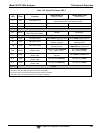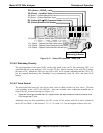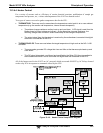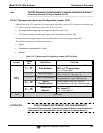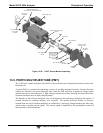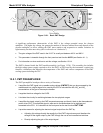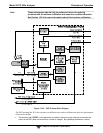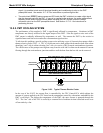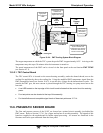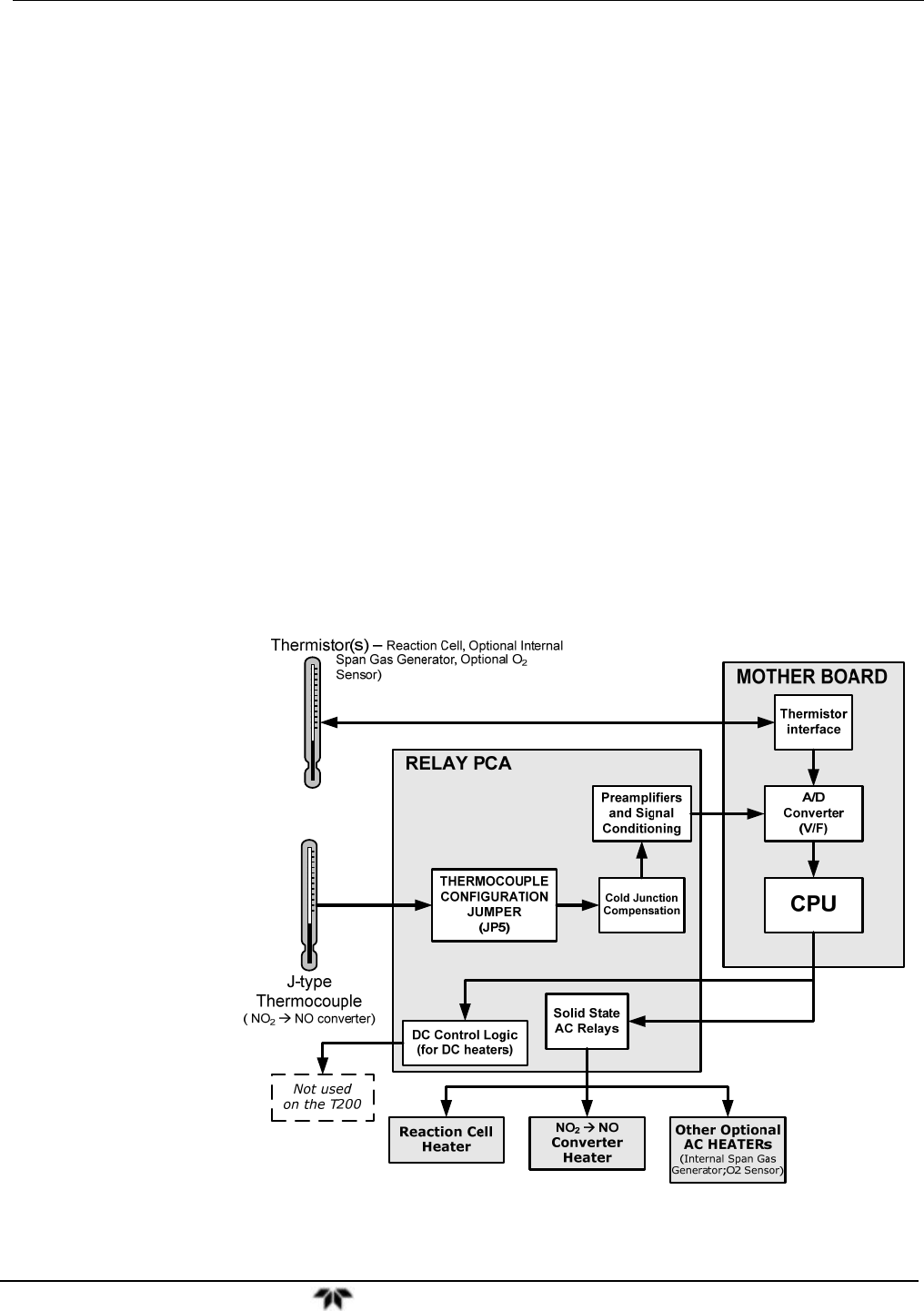
Model 9110T NOx Analyzer Principles of Operation
Teledyne Analytical Instruments 349
13.3.4.4. Heater Control
For a variety of reasons such as, efficiency of certain chemical reactions, stabilization of sample gas
temperature and pressure, etc., various subcomponents of the 9110T are heated/cooled.
Two types of sensors are used to gather temperature data for the CPU:
THERMISTORS: These are used in areas where the temperature control point is at or near ambient
temperature (e.g. the reaction cell temperature, internal chassis temperate).
Thermistors change resistance as they heat up and cool down. A DC signal is sent from the
Mother board of a sent voltage and current. As the thermistor changes resistance, the
returning voltage rises and falls in direct relationship to the change in temperature.
The output signal from the thermistors is received by the motherboard, converted into digital
data which is forwarded to the CPU.
THERMOCOUPLES: These are used where the target temperature is high such as the NO
2
NO
converter.
Thermocouples generate DC voltage that rises and falls as the thermocouple heats up and
cools down.
This DC signal interpreted, conditioned and amplified by the Relay PCA then transmitted to
the motherboard where it is also converted into digital data and forwarded to the CPU.
All of the heaters used in the 9110T are AC powered which are turned ON/OFF by AC Relays located
on the relay PCA in response to commands issued by the CPU.
Figure 13-18: Heater Control Loop Block Diagram.



